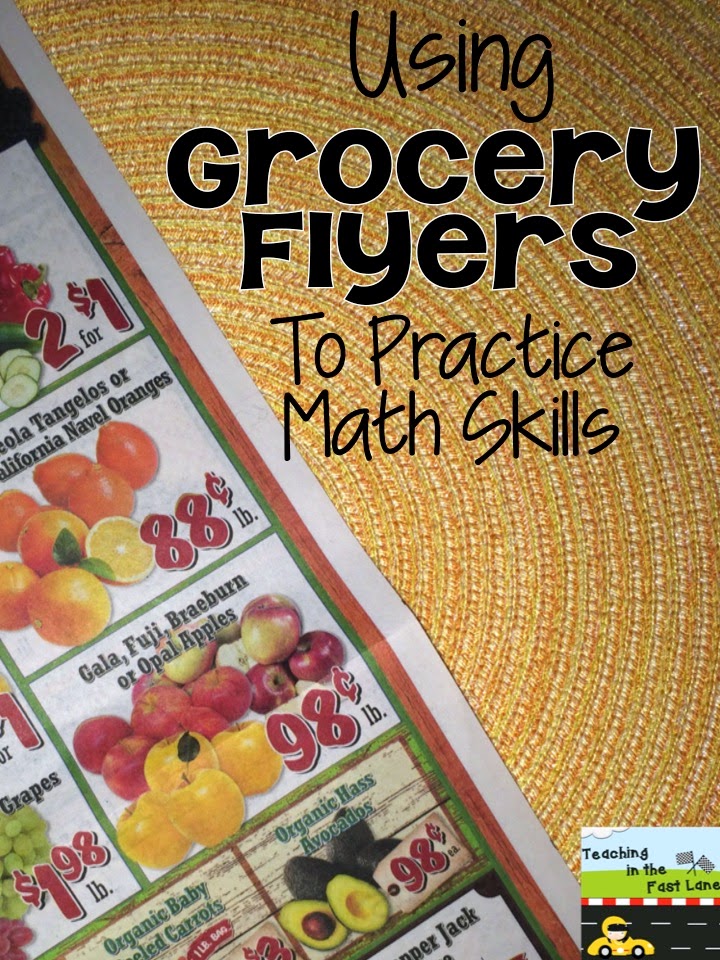 Guest post by Alyssa from Teaching in the Fast Lane.
Guest post by Alyssa from Teaching in the Fast Lane.
Hello all! I am excited to be guest posting here on Laura’s blog. Today I’ll be sharing an easy, low prep way of reviewing multiple math concepts with grocery flyers.
If your mailbox looks anything like mine, it is overflowing with junk mail. One of the biggest culprits is grocery flyers. I receive weekly flyers from four different stores, and they really pile up in the recycling bin. I was staring at the pile one day, and an idea struck me. Real world problem solving was staring right back at me!
On my way to the classroom the next day, I grabbed a handful of flyers to give my idea a try. When small group math time came, I fired out a few questions to my students.
I asked the last question, because most of the time my students have better ideas than I do!

Getting Started with Grocery Flyer Math
My plan was to take these flyers and do a complete review of our math concepts from the year.
We started with each student choosing an item, cutting it out, then gluing it to an index card. On the index card we recorded the price in standard, word, and expanded form as well as drew a base ten model.
The next step was to take these items and compare them. We ordered them from least to greatest then placed them on a giant number line. We also converted our decimals into fractions, and that was just out first day!

More Math Concepts to Explore
I was so impressed with how engaged my students were by these grocery flyers, so I went home after that first day and thought about what else we could do.This is what I came up with:
Of course, this list is not all that you can do, but it should be a great start!
Alyssa is a fourth grade teacher who strives to reach every student through cooperative learning, novel experiences, and various teaching antics. She blogs at Teaching in the Fast Lane.